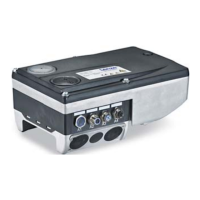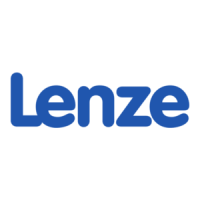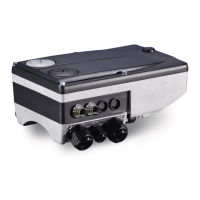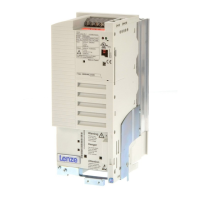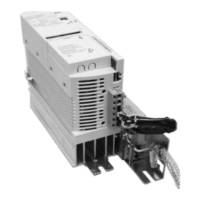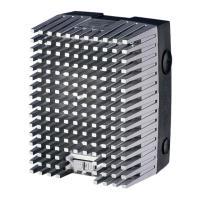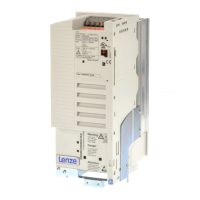5 Motor control (MCTRL)
5.8 Sensorless control for synchronous motors (SLPSM)
208
Lenze · 8400 HighLine · Reference manual · DMS 12.0 EN · 06/2017 · TD23
_ _ _ _ _ _ _ _ _ _ _ _ _ _ _ _ _ _ _ _ _ _ _ _ _ _ _ _ _ _ _ _ _ _ _ _ _ _ _ _ _ _ _ _ _ _ _ _ _ _ _ _ _ _ _ _ _ _ _ _ _ _ _ _
5.8 Sensorless control for synchronous motors (SLPSM)
This function extension is available from version 10.00.00!
The sensorless control for synchronous motors is based on a decoupled and separated control of the
torque-creating and field-creating current share of synchronous motors. In contrast to the servo
control, the actual speed value and the rotor position are reconstructed via a motor model.
Stop!
• When the maximum output frequency is limited to ± 599 Hz, the devices are not
subject to the export restrictions of the "EC-Dual-Use Regulation" - EC 428/2009. This
applies to the devices supplied from the middle of the year 2015. The maximum
possible output frequency is given on the nameplate.
• For certain applications, the devices can be supplied with the previous maximum
output frequency of ± 1000 Hz. If required, get in touch with your Lenze contact
person.
• The sensorless control for synchronous motors is only possible up to a maximum
output frequency of 650 Hz (from version 14.00.00: 1000 Hz)!
• Depending on the number of motor pole pairs, the reference speed (C00011
) may
only be selected that high that the output frequency displayed in C00059
is less
than or equal to 650 Hz (from version 14.00.00: 1000 Hz).
• We recommend to select a power-adapted combination of inverter and motor.
• The Lenze setting permits the operation of a power-adapted motor. Optimal
operation is only possible if either
:
• the motor is selected via the »Engineer« motor catalogue,
• the motor nameplate data are entered and motor parameter identification is
carried out afterwards
- or -
• the nameplate data and equivalent circuit data of the motor (motor leakage
inductance and motor stator resistance) are entered manually.
• When you enter the motor nameplate data, take into account the phase connection
implemented for the motor (star or delta connection). Only enter the data applying to
the selected connection type.
• In order to protect the motor (e.g. from demagnetisation) we recommend setting the
ultimate motor current in C00939
. This ensures motor protection even with an
unstable operation. Maximum current monitoring
( 308)
• Controller enable is only possible if the motor is at standstill.
• When the controller is enabled, a jerk may occur due to an angle jump since the
rotor displacement angle is not known after controller enable. For some
applications, this jerk in the machine is not acceptable.
• From version 11.00.00, the rotor displacement angle is identified with every
controller enable in the Lenze setting, and thus a jerk in the machine after
controller enable can be avoided. Pole position identification without motion
( 226)
• A flying restart circuit for synchronising to rotating motors is in preparation.
• The injection of a constant current may cause an unwanted heating of the motor at
controlled operation.
• We recommend using a temperature feedback via PTC or thermal contact. Motor
temperature monitoring (PTC) ( 302)
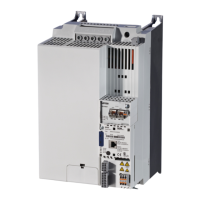
